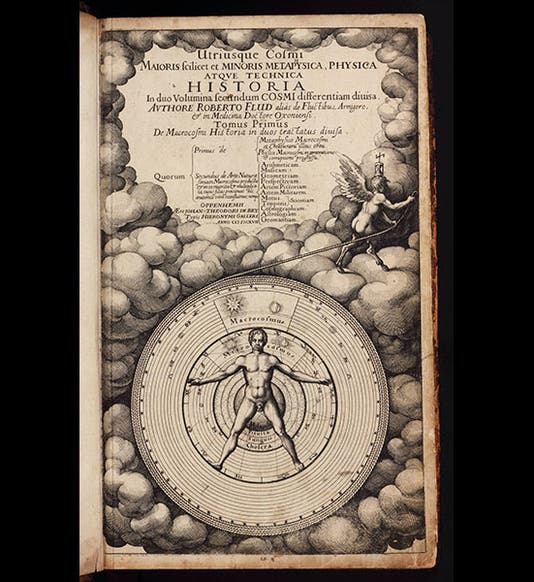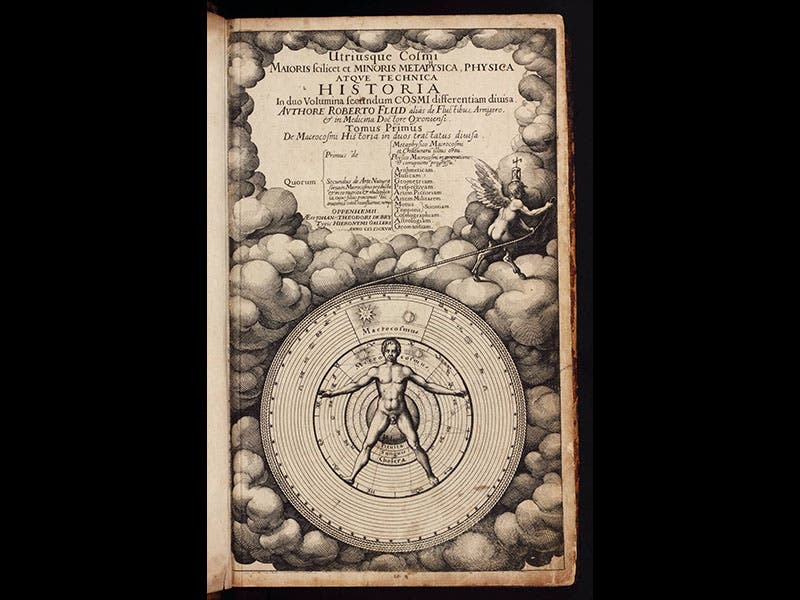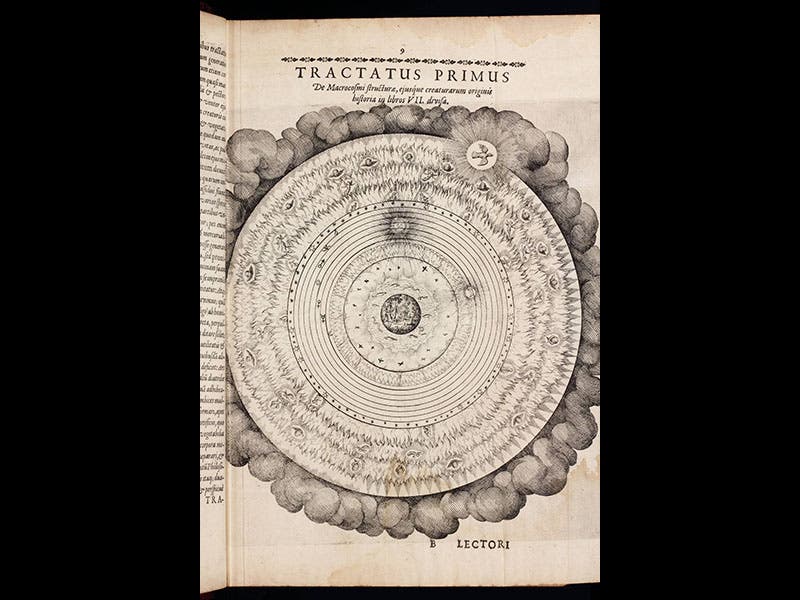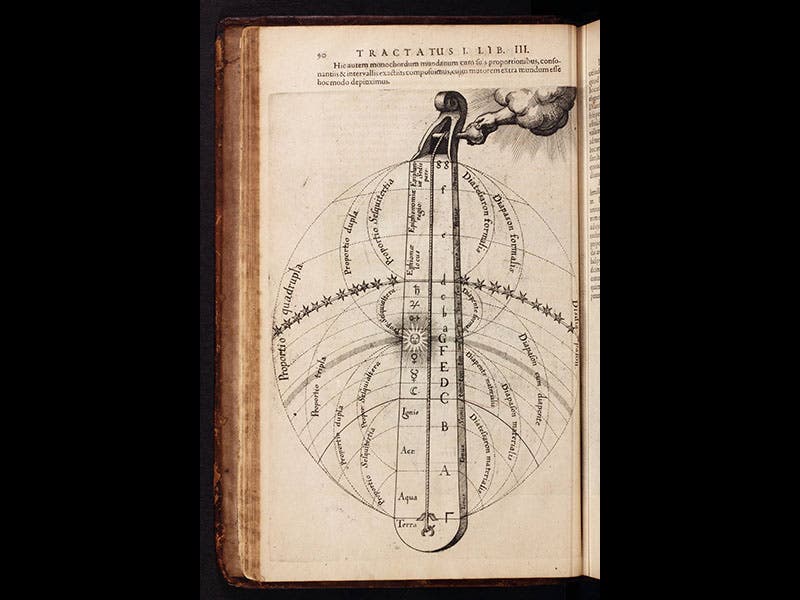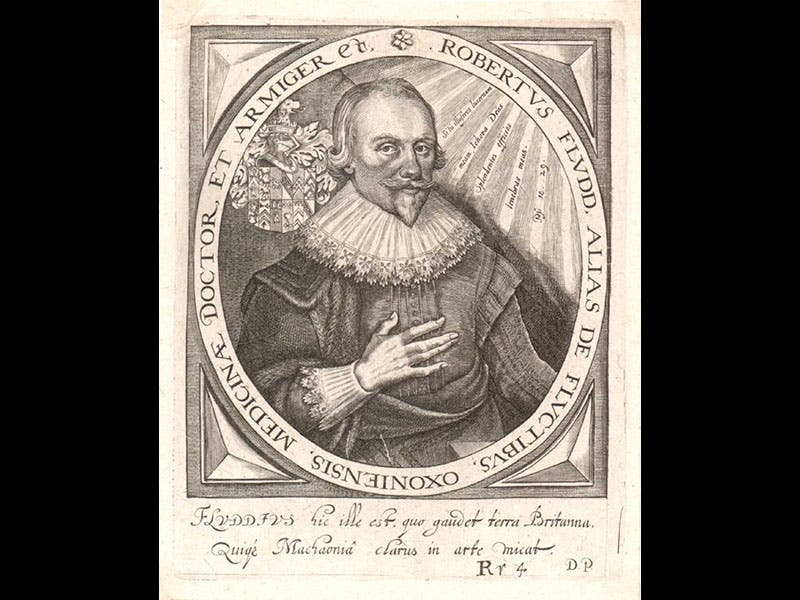Scientist of the Day - Robert Fludd
Robert Fludd, an English physician and Hermetic philosopher, died Sep. 8, 1637, at age 63 (fourth image). Fludd is best known for his mammoth encyclopedia, Utriusque cosmi maioris scilicet et minoris metaphysica (History of the Macrocosm and Microcosm, 1617-19), the last gasp of a Renaissance magical world view that envisioned an interconnected universe filled with correspondences and sympathies. The book is famous for its engraved plates that illustrate these connections, such as the wonderful title page, depicting a human form, the microcosm, overlying the planetary spheres, the macrocosm (first image). Another plate shows a three-part macrocosm, with an elemental world surrounded by celestial spheres and the nine orders of angels (second image). A third engraving illustrates a cosmic monochord, with each planet corresponding to a musical tone, demonstrating the harmony of the spheres (third image). Numerous brackets connect the elemental, celestial, and angelic realms, with labels such as “octave,” “fifth”, and “fourth” identifying the interconnecting harmonies.
Fludd’s images drew an attack from Johannes Kepler, who at the time was completing his own Harmonies of the world (Harmonices mundi, 1619), and at the end of this work he weighed in on Fludd. Kepler discovered his harmonies by measuring such things as planetary distances and speeds, and then looking for harmonic ratios in those figures. Fludd, he argues, just made them up. Fludd’s macrocosms are attractive to behold, but if the harmonies don’t correspond to any numbers in the real world, then they are just nonsense, argued Kepler. This brief contretemps epitomizes the difference between the Renaissance and the 17th century world views, the one proposing correspondences everywhere, the other insisting that a correspondence not grounded in a physical measurement is a phantasm. Fludd replied, and then Kepler, and then Fludd again, and needless to say, neither convinced the other. It is hard to have a conversation when there is no common ground. Such is often the case when world views collide.
Dr. William B. Ashworth, Jr., Consultant for the History of Science, Linda Hall Library and Associate Professor, Department of History, University of Missouri-Kansas City. Comments or corrections are welcome; please direct to ashworthw@umkc.edu.

